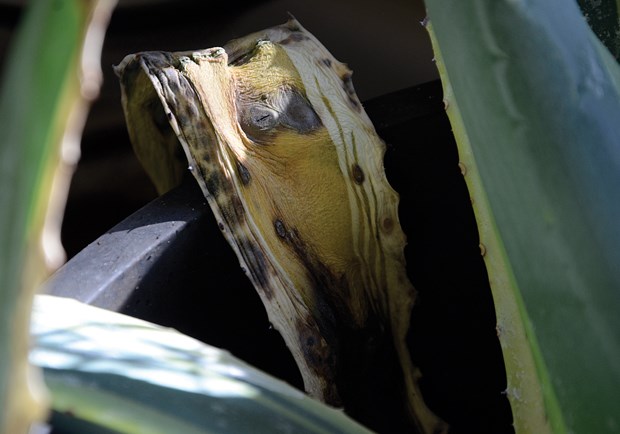As the saying goes, "Gardeners often have to take the test before they learn the lesson."
Even experienced, trained horticulturists and landscapers fail when first attempting something new or out of their comfort zone.
Some of the risks I have taken in my garden have been monumental failures but I have learned from those mistakes and become more proficient at my craft. Failure is part of learning and yes some mistakes can be expensive but do not let the fear of failure prevent you from trying new things in the garden.
Winter planting is not new but it is often avoided by gardeners and homeowners who want to improve their yards. Winter is a great time to plant for several reasons. Firstly, the disturbance in the garden occurs during the low season when garden use is generally at its lowest.
Secondly, hardy trees, shrubs and perennials can be safely planted or transplanted during winter as long as the ground is not frozen deeply, temperatures are not below minus one or two Celsius, and the plants are hardy for our climatic zone. Hardy plants either sit in the nursery and freeze or the plants sit in your garden and freeze - it makes no difference to the plant.
Thirdly, garden and landscape companies may offer competitive rates in the low or winter season.
For trained and experienced gardeners, late winter is an ideal time to plant and transplant trees, shrubs and perennials just before the arrival of spring. For example, hostas, which are one of the most ubiquitous of garden plants, can be dug out of the ground, divided and planted or left sitting on the ground to freeze and they will still regrow in spring (unless the freeze is really hard, like below minus five degrees Celsius). I am not recommending that anyone treat their plants so unkindly but hardiness is hardiness.
Tender plants, those plants that have borderline hardiness in our climate, should not be planted or transplanted in winter. Examples of tender plants include fan palms, bananas, Mediterranean origin plants and so on, not including annuals which are warm weather divas.
When it comes to constructing new hardlandscape features like retaining walls, walkways, pergolas and patios in winter, there are two primary problems that must be avoided. Firstly, rain saturation destabilizes the granular base upon which those hard features are built which can lead to long-term failure of the structure. Secondly,
freezing temperatures below minus two or three degrees Celsius can cause heaving of the granular base which destabilizes the structure. Rain and freezing temperatures are a fact of life in the frozen north and building does not stop in winter but precautions and suitable timing of operations can safely mitigate those problems.
Despite the recent cold spell, this year's generally mild winter has allowed gardeners and landscapers to keep busy working the soil and sculpting the earth to create beautiful outdoor living spaces. I have seen several companies taking advantage of this year's mild winter to build beautiful gardens. Those companies are using all manner of scheduling and site protection to allow completion of their projects. One company I saw had constructed a large plastic tent-like covering over half of the project site to allow them to work unfettered by weather.
Another company that was doing a softscape planting job had plants delivered and placed temporarily in a shipping container to prevent winter damage. The theory here is that the shipping container prevents freezing of the plants until planting time. Once in the ground the plants are perfectly hardy, it is only while the plants are sitting out in their pots that they are susceptible to freeze damage through the pot.
Other precautions regularly used during winter landscape construction include tarps to prevent rain saturation of imported soil or granular materials, heaters and frost mats for concrete curing, and working on the days when the weather is favourable and shutting down when rain or freezing temperatures prevent proper construction efficacy.
Winter is a good time to design new gardens, plan ahead for spring or grow seeds. Winter is also a time to renovate overgrown garden beds, construct new features, plant or transplant hardy plants and prune those plants that respond well to winter pruning. A little advice and some research can go a long way to helping you understand what is possible for winter work in the garden. Remember that we live on the mild Wet Coast and it never stays very cold here for very long. We rarely have snow on the ground for more than a week and the weather usually does not get as cold and foreboding as it does in eastern Canada. But most importantly, as another old saying goes, "Life begins at the end of your comfort zone."
Todd Major is a journeyman horticulturist, garden designer and builder, teacher and organic advocate. [email protected]



